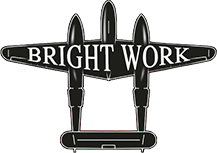When the winter’s over and a new season begins, it's time to think about ways…
Tips For Using An Electric Buffer For Your Airplane
Every aircraft owner needs to polish his plane, and when the time comes, they have two ways of getting the job done. Aircraft owners have the option of either buffing their planes by hand or using an electric buffer. Buffing by hand allows you to reach areas that an electric buffer may miss, but this method is also much more time-consuming and exhausting. For this reason, most aircraft owners either solely use an electric buffer on their aircraft or use a combination of both methods. But, figuring out the best way to use an electric buffer can be challenging if you’ve never worked with this type of tool before. The next time you need to polish your plane, follow these tips for using an electric buffer:
Check the lighting
Make sure that you are in a well-lit area before you begin buffing so you can easily see all of the spots and scratches that need to be removed. If the lighting isn’t right, you may end up having to buff certain areas again. It’s easiest to see all of the imperfections on your plane in natural light, but you should not go outside to polish the plane if the temperature and humidity isn’t right. It’s recommended that you only polish your aircraft outside if the temperature is between 70-85 degrees Fahrenheit and humidity levels are low. High levels of humidity or temperatures outside of this range could impact the effectiveness of the polish.
Remove dirt first
Before turning the buffer on, it’s important to clean the surface of your aircraft. This tool should not be used to remove dirt and debris from the aircraft. In fact, if dirt gets caught in the buffing pad, it could damage the aircraft. Avoid these problems by thoroughly washing the exterior of your aircraft before you begin to use an electric buffer.
Spread the polish
Once you are ready to begin, apply a small amount of polish to the buffing pad. Place the buffing pad on the surface of the plane and spread the polish around before turning the buffer on. If you turn the buffer on before doing this, the polish will all be used on the first area that the buffer comes into contact with, so you will end up using a lot of product to get the job done.
Start buffering
Make sure you have a firm grip on the electric buffer. If you’ve never buffed an aircraft before, the power of this tool can catch you off guard at first. It’s best to start off with a low speed so you can get used to using the tool before cranking the speed up. Move slowly from side to side and then up and down. Let the movements overlap so you can make sure that every inch of the surface has been buffed.
You don’t have to press down incredibly hard in order to buff your plane. As a matter of fact, it’s better if you only apply a light amount of pressure when using an electric buffer. Using a light amount of pressure will ensure that you do not accidentally damage the surface of your aircraft. Applying a lot of pressure is also a bad idea because it can be exhausting, which means you may have to take frequent breaks while polishing your aircraft. Keep it light unless you are working on an area with deep scratches, in which case you should apply a bit more pressure.
Make sure that you keep the buffing pad level on top of the surface as you are buffing. If the buffing pad is not level, the electric buffer could create swirls or streaks that will need to be buffed over. If you’re ready to take a break or you want to check your work, be sure to turn the electric buffer off before lifting it off of the plane. Taking the electric buffer off of the surface while it is still in motion could cause damage.
Take it section by section
Don’t expect to be able to polish the entire surface of the plane at once. Instead, focus on buffering one small section at a time. The task of polishing your plane becomes much more manageable when you think of it this way.
How do you know when it’s time to move from one section to the next? Take a look at the polish. If it is starting to dry out or turn clear, turn off the electric buffer and examine your work. If there are no visible marks or streaks, this section is complete. You may need to use a soft, non-abrasive cloth to remove some of the excess polish from the surface before moving to the next section. But if you missed a spot or need to rebuff an area that has deep scratches, then don’t move on just yet.
Do a test spot
The idea of polishing a plane with an electric buffer can be intimidating if you’ve never done it before. You may worry about making a mistake and damaging your plane, which is understandable. To make yourself more comfortable, choose a test spot on the plane where you can practice your technique. Practice applying the right of amount of pressure and keeping the electric buffer steady so you feel confident in your ability to buff the rest of the plane.
Now that you know how to use an electric buffer, it’s time to buy the perfect polishes to protect your aircraft. The red, white, and blue Bright Work Polishes are aviation approved and designed to remove oxidation, scratches, water spots, and cloudiness. These three products—along with the right electric buffer—can be used to preserve the beauty of your aircraft!

This Post Has 0 Comments